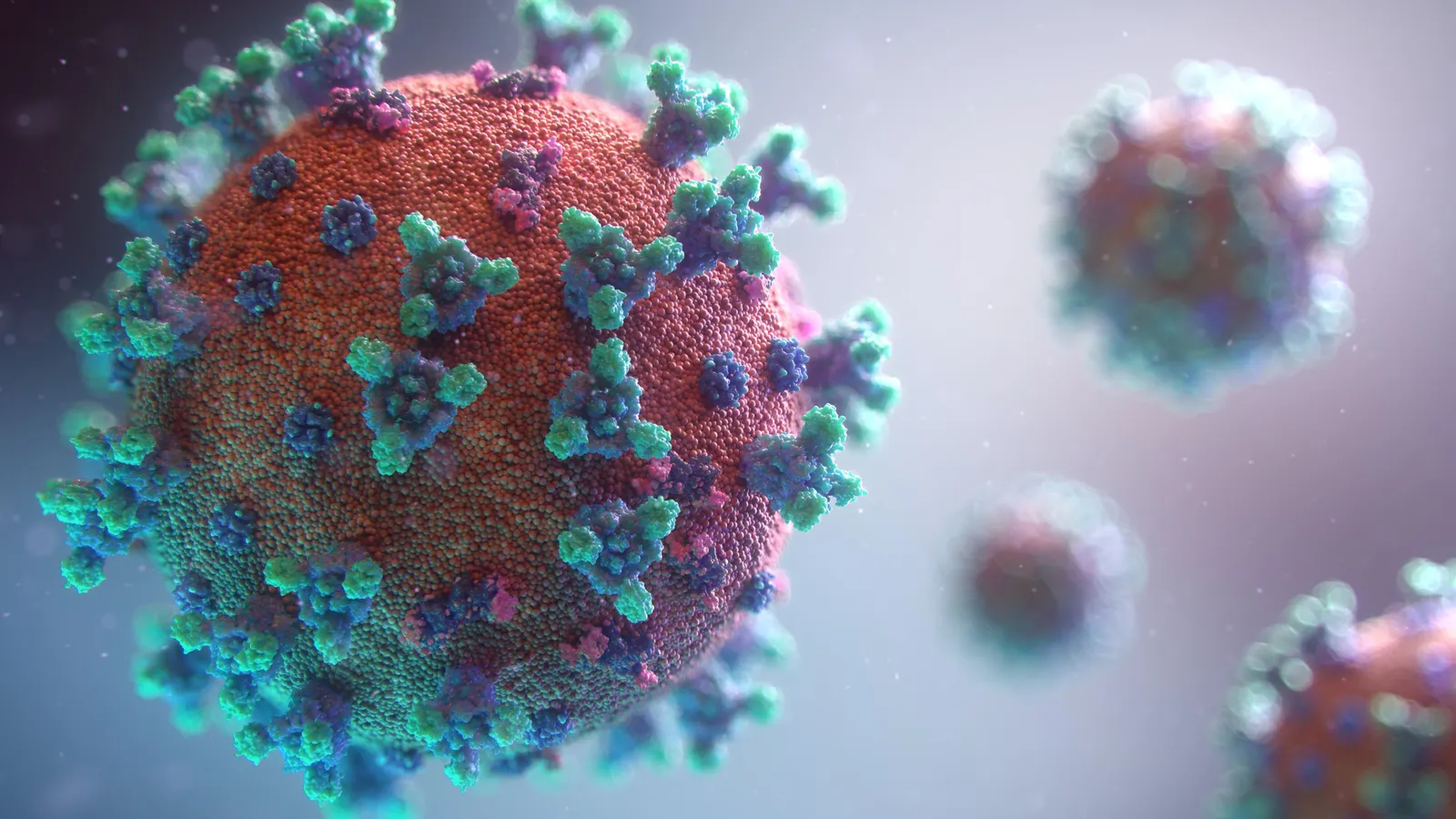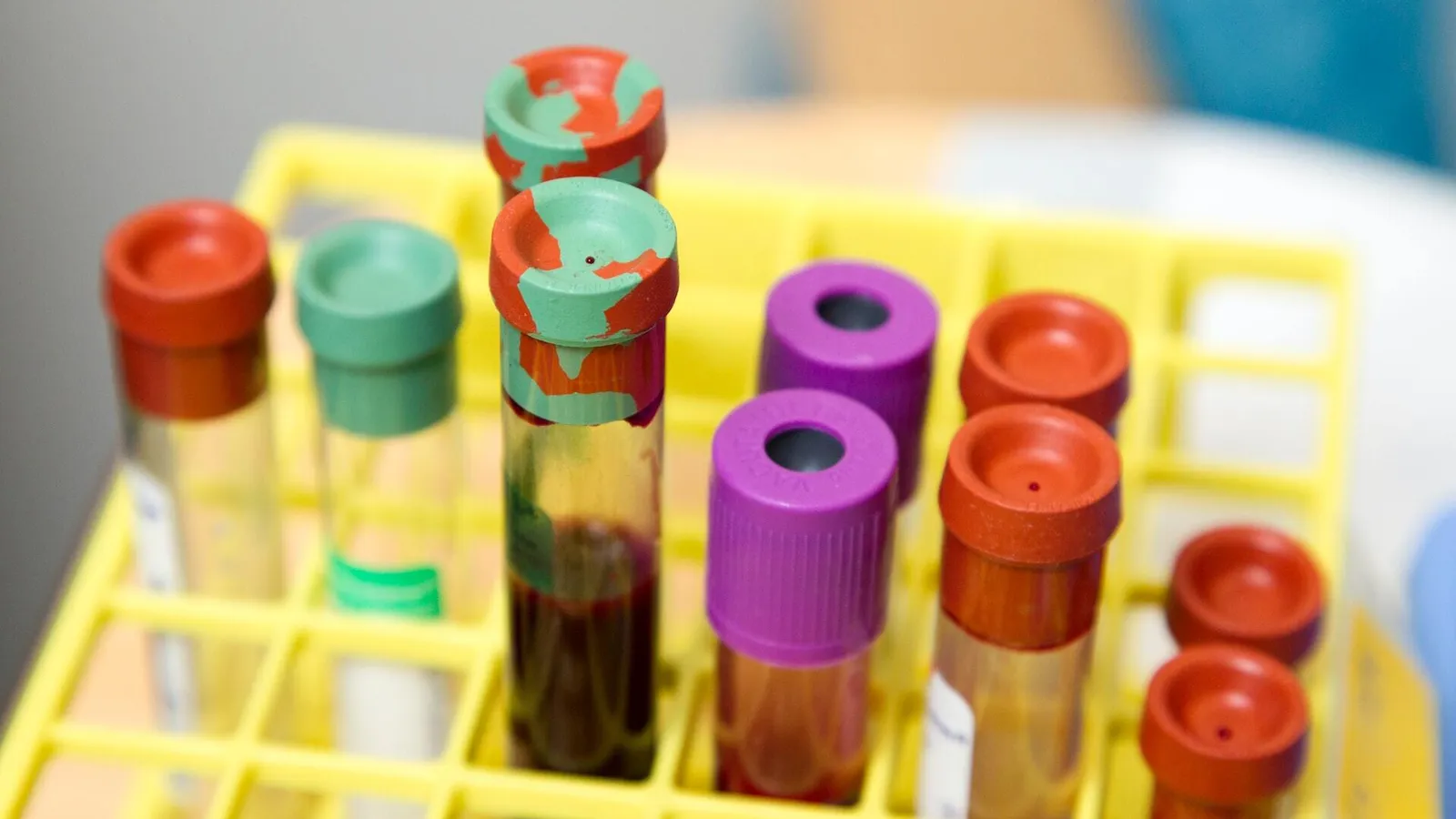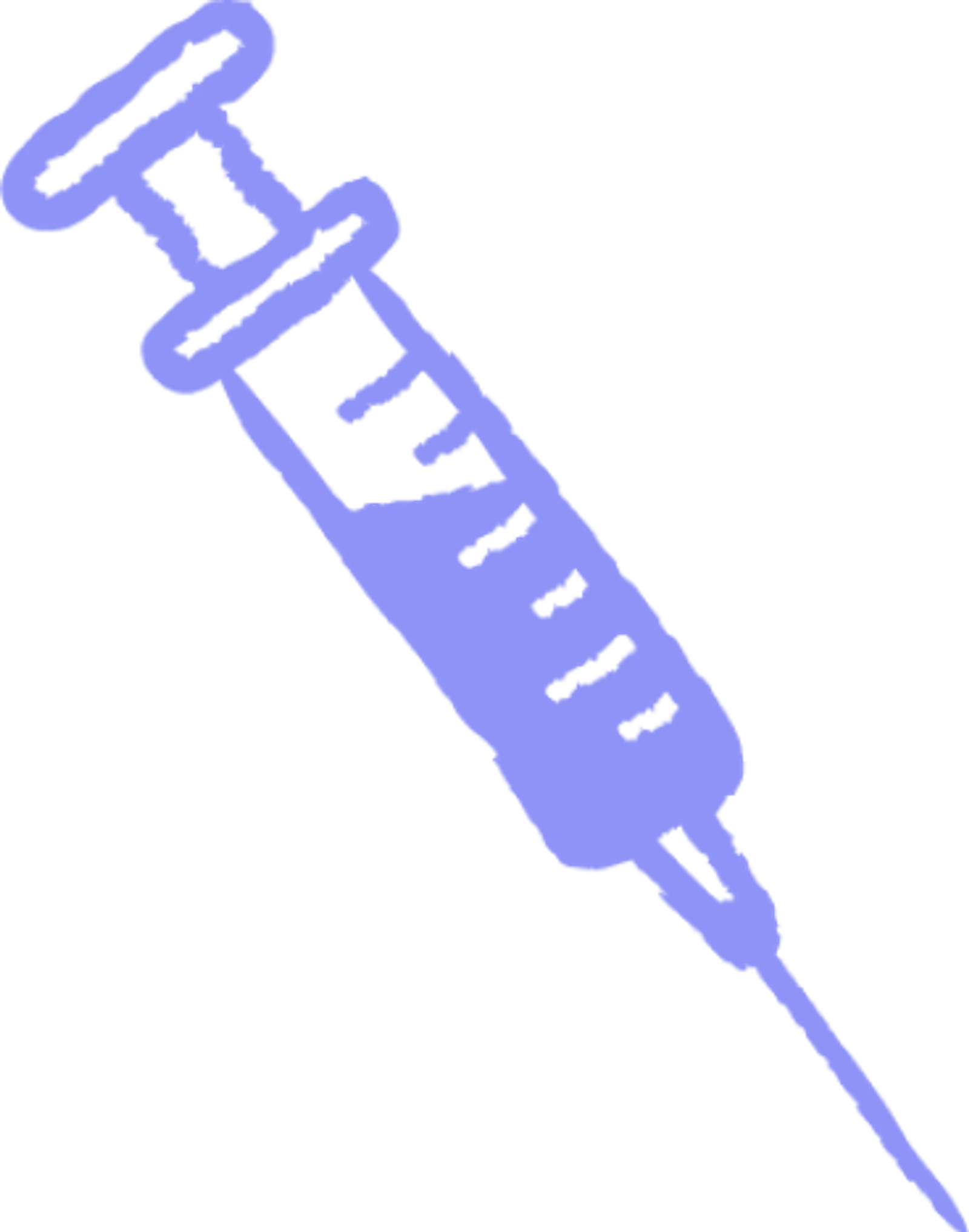Plasma 101
Who: Eligible donors between 18 and 64 can earn up to $560 a month in NY and up to $770 a month in FL.
What: Plasma is the yellow part of your blood that replenishes naturally.
Where: Queens, Brooklyn, The Bronx (NY), and Ft. Pierce (FL).
Why: Get paid to donate and help treat bleeding disorders, immune deficiencies, and more.
When: No appointment needed—walk in anytime before closing.
The Potential of Plasma Exchange in Treating Disease

The Potential of Plasma Exchange in Treating Disease
Plasma exchange is gaining recognition as a powerful therapy for neurological, immunological and critical care diseases. This blog delves into plasma exchange procedures, explores its expanding medical benefits, reviews safety considerations, and spotlights its promise in advancing COVID-19 and Alzheimer’s disease research.
Plasma exchange removes pathogenic antibodies and inflammation, stabilizing neurological, renal, hematological and autoimmune diseases unresponsive to medications alone. Over 80% of myasthenia gravis patients and 70% of ANCA vasculitis cases achieve remission. Emerging research is investigating its efficacy in COVID-19 respiratory crises and slowing Alzheimer’s progression.
Overview of Plasma Exchange Therapy:
Title | Description |
Understanding Plasma Exchange | A therapeutic procedure that removes harmful substances from blood plasma using an apheresis machine. It separates plasma from blood cells, removes harmful components, and replaces plasma with solutions like albumin or fresh frozen plasma. |
Diseases Treated | Effective in neurological, renal, hematological, and autoimmune diseases. Used for conditions like Guillain-Barre Syndrome, myasthenia gravis, thrombotic thrombocytopenic purpura, and ANCA-vasculitis. |
Procedure Details | Involves blood collection, plasma separation, and exchange with a substitute solution. Typically lasts 1-2 hours, with some patients requiring long-term intermittent treatments. |
Therapeutic Effects | Removes pathogenic substances like autoantibodies and toxins, aiding in recovery and disease management. Also replenishes beneficial proteins and electrolytes. |
Safety and Efficacy | Demonstrated safety over decades with common side effects being mild and transient. Severe risks are rare, managed with rigorous safety protocols. |
Understanding Plasma Exchange
The Process and Mechanism of Plasma Exchange
Plasma exchange is a therapeutic procedure that removes harmful substances from a patient's blood plasma. It involves using an apheresis machine to extract the plasma portion of a patient's blood while returning the cellular components back to their body. The plasma is then replaced with a substitute solution like albumin or fresh frozen plasma.
The procedure begins by collecting blood from the patient through a venous access point, usually in the arm. The blood flows through an apheresis device that spins the blood in a centrifuge to separate the plasma from the cells. The plasma is extracted and stored, while the cells are combined with a replacement solution before being returned to the patient. This exchange process removes inflammatory mediators, autoantibodies, cryoglobulins, lipids, toxins and other pathogenic substances from the plasma.
At the same time, plasma exchange helps restore fluid and protein balance. The substitute solutions replenish clotting factors and albumin needed to maintain colloid osmotic pressure. This can stabilize blood volume and improve rheological properties. The procedure typically lasts 1-2 hours based on the patient's total plasma volume needing exchange. Some patients require long term intermittent treatments to control disease activity.
The therapeutic effects of plasma exchange center on removing pathogenic substances from plasma that drive disease processes. These substances may be autoantibodies attacking nerves or muscle, inflammatory cytokines, paraproteins causing tissue damage, or toxins causing renal failure. Removing these factors gives the body a chance to recover without their influence. The renewed plasma also brings in beneficial proteins and electrolytes.
Diseases Treated with Plasma Exchange
Plasma exchange is used to treat a variety of neurological, renal, hematological, and autoimmune diseases. It is often utilized when drug therapies alone cannot control acute flare ups or rapidly progressive disease.
In neurology, plasma exchange is a first line treatment for Guillain-Barre Syndrome (GBS), chronic inflammatory demyelinating polyneuropathy (CIDP), myasthenia gravis crises, Lambert-Eaton myasthenic syndrome, and anti-NMDA receptor autoimmune encephalitis. By removing autoantibodies and inflammation from nerve membranes and neuromuscular junctions, plasma exchange can stabilize nerve functioning in these disorders.
For hematological diseases like thrombotic thrombocytopenic purpura (TTP), cryoglobulinemia, multiple myeloma, and goodpasture’s syndrome, plasma exchange removes autoantibodies, paraproteins, and toxins doing damage to the kidneys, platelets, and vasculature. It is used alongside oncology treatments such as chemotherapy and immunosuppressants to control these complex conditions.
In renal disorders like ANCA-vasculitis, hemolytic uremic syndrome, rapidly progressive glomerulonephritis, and antibody-mediated transplant rejection, plasma exchange can remove anti-neutrophil antibodies, Shiga toxins, antibodies attacking kidney tissue, and antidonor antibodies early post-transplant. This protects kidney function when it is most compromised.
Plasma exchange is also growing in application for severe autoimmune diseases like systemic lupus erythematosus, scleroderma renal crisis, dermatomyositis, and pemphigus vulgaris. By removing elevated autoantibodies and excess cytokines, plasma exchange provides organ support and prevents end organ damage while immunosuppressive medications start working.
Olgam Life recognizes the importance of plasma exchange therapy for patients dealing with serious medical disorders. The plasma collected at our donor centers provides vital treatment components to help stabilize those undergoing plasma exchange. Our donor rewards give individuals needing extra income a way to also contribute to life-saving plasma production. We care about both the health of donors visiting our welcoming centers as well as the patients ultimately receiving therapies made from their plasma donations.

Emerging Applications and Specific Conditions:
Title | Description |
Emerging Applications in Medicine | Investigational use in treating COVID-19 and Alzheimer’s disease. Aims to reduce respiratory deterioration in COVID-19 by removing inflammatory cytokines and exploring potential in removing amyloid proteins in Alzheimer’s. |
Plasma Exchange in Specific Conditions | First-line therapy for acute neurological disorders like Guillain-Barre syndrome and myasthenia gravis. Experimental in infectious diseases like severe COVID-19, showing improved outcomes in some studies. |
Potential in Treating Alzheimer's Disease | Experimental research into the impact on Alzheimer’s disease by removing amyloid beta proteins and inflammatory molecules. Observations include temporary stabilization in cognitive scores and changes in biomarkers. |
Safety Considerations | Includes common side effects like tingling, muscle cramps, and nausea. Rare severe risks managed with safety protocols. Long-term risks mitigated with post-procedure care. |
Role of Olgam Life | Provides vital plasma for treatments and supports innovation in plasma exchange therapy. Ensures safety and quality in plasma donation and treatment processes. |
The Benefits of Plasma Exchange
Effectiveness in Treating Diseases
Clinical research over the past 40 years has shown plasma exchange to be highly effective in stabilizing and improving outcomes for various neurological, hematological, renal and autoimmune disorders.
In neuroimmunological disorders like myasthenia gravis, Guillain-Barre syndrome, chronic inflammatory demyelinating polyneuropathy (CIDP), and Lambert-Eaton myasthenic syndrome, studies indicate plasma exchange leads to faster improvement in muscle strength, ability to breathe independently, walk unaided, and perform daily tasks compared to intravenous immunoglobulin (IVIG) or corticosteroids alone. Remission rates also increase with the addition of plasma exchange.
For atypical hemolytic uremic syndrome, cryoglobulinemia, thrombotic thrombocytopenic purpura and ANCA-vasculitis, plasma exchange has been crucial in reversing organ failure, reducing risk of end stage renal disease, and enabling kidney transplant surgery. Combined with immunosuppression, plasma exchange enables short term organ support while medications tackle underlying autoimmunity.
In neurological disorders like anti-NMDA receptor autoimmune encephalitis or neuropsychiatric lupus, plasma exchange is beginning to demonstrate stability of psychiatric symptoms, cognitive functioning, and seizures when used alongside first line medications.
As an early treatment for transplant rejection, plasma exchange removes antidonor antibodies to enable organ recovery before considering retransplant. In various studies, graft survival significantly improves if plasma exchange is started in the first week post rejection.
Plasma exchange has proven itself as more than just a temporary rescue therapy. By rapidly removing pathogenic substances and supporting organ functioning, it creates windows of opportunity for medications, physical rehabilitation, and the body’s self-healing abilities to have effect.
Olgam Life provides the plasma donations needed for life-saving plasma exchange treatments. The compensation offered to donors gives individuals a way to supplement their income while doing good for others.
Emerging Applications in Medicine
While plasma exchange has established roles in the disorders discussed above, research has started exploring its potential benefits in other disease areas.
Recent trials in severely ill COVID-19 patients have begun utilizing plasma exchange combined with anti-viral medications to try reducing respiratory deterioration and death. By removing inflammatory cytokines like IL-6, IL-1β, and TNF-α that drive complications in COVID-19, plasma exchange aims to stabilize the hyperinflammation and prevent progression to respiratory failure.
Studies have also begun investigating if plasma exchange could remove amyloid proteins or autoantibodies in Alzheimer’s disease patients. Some early results have shown temporary stabilization in cognitive scores after plasma exchange sessions along with changes seen in certain Alzheimer’s biomarkers. Ongoing research includes evaluating its effects on tau proteins and neuroinflammation.
In complex neurological illnesses like multiple sclerosis, plasma exchange has long been used to treat relapses and help recovery from significant attacks. Trials are now exploring the impact of regular plasma exchange sessions on slowing long term disability progression in MS patients. If effective, this could provide a therapeutic option alongside mainstay MS drugs.
While still investigational, these emerging medical applications of plasma exchange highlight its ongoing promise. As an early treatment for COVID-19 deterioration or a supplemental therapy in neurodegenerative diseases, plasma exchange might expand its clinical niche. Olgam Life supports continued innovation in this field by providing high quality plasma donations to enable these cutting edge treatments. Our donor community directly contributes to exploring new plasma exchange possibilities while receiving compensation for their commitment.

The Risks and Challenges of Plasma Exchange
Understanding the Side Effects
While plasma exchange has demonstrated safety and efficacy over decades of use, patients may experience certain side effects during or after the procedure. However, the majority of these effects are mild and transient.
Common temporary side effects include tingling in the lips or fingers, muscle cramping or spasms, nausea, flushing, headache, fatigue, hypocalcemia related to citrate anticoagulation, and urticaria. These symptoms generally resolve on their own within a few hours of treatment.
Rare but more severe risks include hypotension, arrhythmia, pulmonary edema, air embolism, infection, and bleeding or thrombosis if anticoagulation levels are not properly maintained. However, trained staff constantly monitor vital signs, withdrawal pressures, fluid balances and anticoagulation levels during procedures to minimize adverse events.
Potential long term risks if not properly supplemented include low protein states, anemia, and loss of clotting factors. However, post-procedure albumin doses and close lab monitoring greatly mitigate any lasting deficiencies.
Any patient reactions are classified, recorded and reviewed to enable further process improvements. Overall, the safety profile of plasma exchange performed in experienced centers enables therapeutic benefits that outweigh procedure risks for seriously ill patients.
Safety Protocols and Patient Care
All plasma exchange procedures incorporate rigorous safety protocols to protect patient well-being. This begins with donor screening and plasma testing policies that prevent any compromised components from entering exchanges.
During sessions, dedicated apheresis machines continually monitor vital signs, fluid balances, anticoagulation levels and access pressures. This data is tracked in real time by technicians specially trained in plasma exchange. Any parameter deviations trigger predefined safety interventions to stabilize patients.
If hypotension, arrhythmia or other reactions occur, emergency management protocols engage. Staff administer medication boluses, supplemental oxygen, temporary dialysis or CPR based on institutional algorithms. Post-incident analysis then informs updated policies.
To further support patient safety, plasma exchange centers maintain stringent regulatory standards. This includes facility accreditation, equipment maintenance protocols, quality control testing, and staff competency validation. Review processes help constantly strengthen reliability and care quality.
Olgam Life upholds rigorous safety protocols across every facet of operations - from donor eligibility screening to plasma handling procedures all the way to recipient infusion standards. We aim to provide the highest quality plasma components to enable safe, effective treatments while maintaining a welcoming, supportive environment for our donor community. Their commitment fuels life-saving therapies made possible by plasma exchange.
Plasma Exchange in Specific Conditions
Plasma Exchange in Neurological Disorders
Plasma exchange is considered a first-line therapy for acute exacerbations of neurological conditions like Guillain-Barre syndrome (GBS), chronic inflammatory demyelinating polyneuropathy (CIDP), myasthenia gravis crises, and Lambert-Eaton myasthenic syndrome when rapid treatment is needed to prevent respiratory failure and permanent nerve damage.
In GBS, antibodies directed against nerve components trigger inflammatory demyelination and axonal degradation, leading to rapidly progressive weakness and paralysis. Plasma exchange aims to remove these autoantibodies and inflammatory factors to support remyelination and recovery. Patients often regain ability to breathe independently and walk within weeks when treated early.
Similarly in myasthenia gravis crises, binding autoantibodies interfere with acetylcholine receptors at the neuromuscular junction. This leads to severe muscle weakness and potential respiratory compromise during myasthenic crises. Alongside short-term immunotherapies, plasma exchange removes culprit antibodies to stabilize patients. Over 80% of patients have marked clinical improvement after plasma exchange
Based on multiple randomized controlled trials, plasma exchange leads to faster patient recovery and decreased ICU admissions compared to intravenous immunoglobulin (IVIG) or corticosteroids alone in these neurological emergencies. However, combination treatment with plasma exchange and IVIG may provide an additive benefit for some patients.
Plasma Exchange in Infectious Diseases
While still considered experimental, a growing number of studies have begun assessing plasma exchange in COVID-19 patients with acute respiratory distress syndrome (ARDS). Some promising findings have emerged.
In severe COVID-19, extreme inflammatory responses lead to life-threatening lung injury even with anti-viral therapies. Plasma exchange aims to filter out inflammatory proteins like IL-6, TNF-alpha, and IL-1beta that drive this “cytokine storm” before permanent lung scarring develops.
Recent trials found COVID-19 patients receiving plasma exchange alongside standard care had improved oxygenation, shorter ICU stays, and decreased mortality compared to standard care alone. In the most critically ill subgroups requiring mechanical ventilation, survival increased from 53% to 92% with added plasma exchange.
However, questions remain regarding which patient subgroups have the best chance of responding and the optimal timing for treatment. Ongoing research continues clarifying these parameters. If further evidence consolidates benefits, plasma exchange could provide a much needed rescue option for severe COVID-19 cases.
Potential in Treating Alzheimer's Disease
While still highly experimental, emerging research has started exploring if plasma exchange could impact the course of Alzheimer’s disease. Some trials have based this on removing amyloid beta proteins while others target inflammatory molecules or autoantibodies potentially driving disease processes.
In small studies to date, sporadic observations have been made of temporary stabilization in cognitive scores, changes in certain Alzheimer’s biomarkers, and shifts in brain imaging after serial plasma exchange sessions. However, no long term benefit on neurodegeneration has been proven.
Researchers face difficulties with the slowly progressive nature of Alzheimer’s disease versus the transient effects of intermittent plasma exchange treatments. Larger, multi-year controlled trials with optimized treatment frequencies would help better clarify if a subgroup of Alzheimer’s patients could experience neuroprotection from this approach.
As a strong supporter of continued innovation in the field, Olgam Life provides the high quality plasma donations essential for cutting edge research. Our donor community directly enables these emerging treatments while receiving compensation for their generosity. If you have any questions, give us a call or check out our frequently asked questions.
















